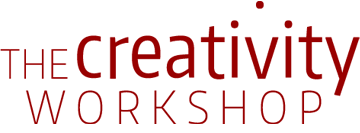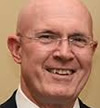How to Cultivate Eureka Moments
by Michiko Kakutani
The Nike slogan “Just Do It” materialized when Dan Wieden, a founder of the advertising agency Wieden Kennedy, thought of the last words uttered by the murderer Gary Gilmore before his execution – “Let’s do it”; – and gave them a tweak. That day a colleague had mentioned Norman Mailer, author of “The Executioner’s Song, an acclaimed book about Gilmore, and that killer’s final words popped into Mr. Wieden’s head.
The idea for Post-it Notes came about when Arthur Fry, an engineer at 3M, was daydreaming in church, thinking how annoying it was that the bookmarks he’d placed in his hymnal so frequently fell out. He then remembered a 3M colleague’s talk about a new glue he’d developed: a paste so feeble that it could barely hold two pieces of paper together. That weak glue, Mr. Fry suddenly thought, might help him create the perfect bookmark, one that would stay put.
The Barbie doll was reportedly born when Ruth Handler, a founder of Mattel, was on vacation in Switzerland and saw an unusual doll in the window of a cigarette shop: the doll was a pretty, well-endowed young woman with platinum blond hair. Because Handler didn’t speak German, she didn’t realize that the doll was a sex symbol sold mainly to men. Instead she saw a prototype for a new toy for girls: an alternative to the baby dolls then popular.
In recounting such creation myths, Mr. Lehrer, a contributing editor at Wired and a contributor to The New Yorker, proves an engaging tour guide to the mysteries of the imagination and the science of innovation.
Like Malcolm Gladwell (“The Tipping Point,” “Blink”) and Joshua Foer (“Moonwalking With Einstein”), Mr. Lehrer takes scientific concepts and makes them accessible to the lay reader while dispensing practical insights that verge on self-improvement tips along the way. With these suggestions, his book implies, you too might be able to maximize your creative output.
The book’s breezy methodology makes for some problems – it’s often difficult to tell just how representative a study or survey, cited by the author, might be – but Mr. Lehrer largely avoids the sort of gauzy hypotheses and gross generalizations that undermined Mr. Gladwell’s 2008 book, “Outliers.”
Much as he did in his earlier books “How We Decide” and “Proust Was a Neuroscientist”, Mr. Lehrer shows how adept he is at teasing out the social and economic implications of scientific theories while commuting easily among the realms of science, business and art. He deconstructs the creative process behind a Bob Dylan song with the same verve he brings to the story of how Procter & Gamble created the Swiffer, its New Age mop. And he examines the art of improv, as taught by the Second City training center in Los Angeles, with the same appraising eye he brings to more arduous discussions of brain science.
The 18th-century philosopher David Hume, Mr. Lehrer notes, argued that invention was often an act of recombination, of compounding an idea or transposing it from one field to another:
Johannes Gutenberg transformed his knowledge of wine presses into an idea for a printing machine capable of mass-producing words. The Wright brothers used their knowledge of bicycle manufacturing to invent the airplane. (Their first flying craft was, in many respects, just a bicycle with wings.) George de Mestral came up with Velcro after noticing burrs clinging to the fur of his dog. And Larry Page and Sergey Brin developed the search algorithm behind Google by applying the ranking method used for academic articles to the sprawl of the World Wide Web; a hyperlink was like a citation.
In each case, Mr. Lehrer points out, “the radical concept was merely a new mixture of old ideas.”
The InnoCentive Web site, started by an Eli Lilly executive in 2001, has shown that solutions to difficult scientific problems (which are posted online, with a monetary reward attached to each challenge) are often solved by people working at the margins of their fields, who were able to think outside the box.
In other words, Mr. Lehrer says: “Chemists didn’t solve chemistry problems, they solved molecular biology problems, just as molecular biologists solved chemistry problems. While these people were close enough to understand the challenges, they weren’t so close that their knowledge held them back and caused them to run into the same stumbling blocks as the corporate scientists.”
Being able to step back and view things as an outsider, or from a slightly different angle, seems to promote creativity, Mr. Lehrer says. This is why travel frequently seems to free the imagination, and why the young (who haven’t learned all sorts of rules) are often more innovative than their elders.
The second half of “Imagine” is devoted to looking at “group creativity, examining what sort of collaborative dynamics (within businesses or communities) tend to maximize innovation. Studies of Broadway musicals by Brian Uzzi, a sociologist at Northwestern University, Mr. Lehrer says, showed that relationships among collaborators were one of the most important factors in the success of a show. If team members had too little previous experience working with one another, they struggled to communicate and exchange ideas. But if they were too familiar with one another, fresh ideas tended to be stifled.
Indeed, group interaction appears to play a key role in innovation. In a lengthy and fascinating section on Pixar, Mr. Lehrer recounts how Steve Jobs designed that animation studio to force employees to visit the building’s main atrium: mailboxes were shifted to the lobby; meeting rooms were moved to the center of the building, followed by the cafeteria, coffee bar, gift shop and bathrooms. Jobs believed, one producer explained, that “the best meetings happened by accident, in the hallway or parking lot.”
In another chapter Mr. Lehrer makes a strong case for cities as incubators of innovation. Echoing Jane Jacobs, he argues that the sheer density of urban life, “the proximity of all those overlapping minds, forces people to mingle and interact with a diversity of individuals. This, he goes on, creates exactly the sort of collision of cultures and classes that often yields new ideas. He even quotes a theoretical physicist, Geoffrey West, who says he has found data that validates Jacobs’s theories.
“What the numbers clearly show, and what she was clever enough to anticipate, Mr. West says, “is that when people come together, they become much more productive per capita.
One study by Mr. West and another physicist, Luis Bettencourt, Mr. Lehrer writes, suggests that “a person living in a metropolis of one million should generate, on average, about 15 percent more patents and make 15 percent more money than a person living in a city of 500,000.”
In the later pages of this engaging book Mr. Lehrer turns from analysis and reportage to prescription. The jostle and serendipity of city life, he believes, can provide a model for how the Internet might be retooled to accelerate creativity.
“Instead of sharing links with just our friends, or commenting anonymously on blogs, or filtering the world with algorithms to fit our interests, we must engage with strangers and strange ideas, he writes. “The Internet has such creative potential; it’s so ripe with weirdness and originality, so full of people eager to share their work and ideas. What we need now is a virtual world that brings us together for real.”
The Wall Street Journal





